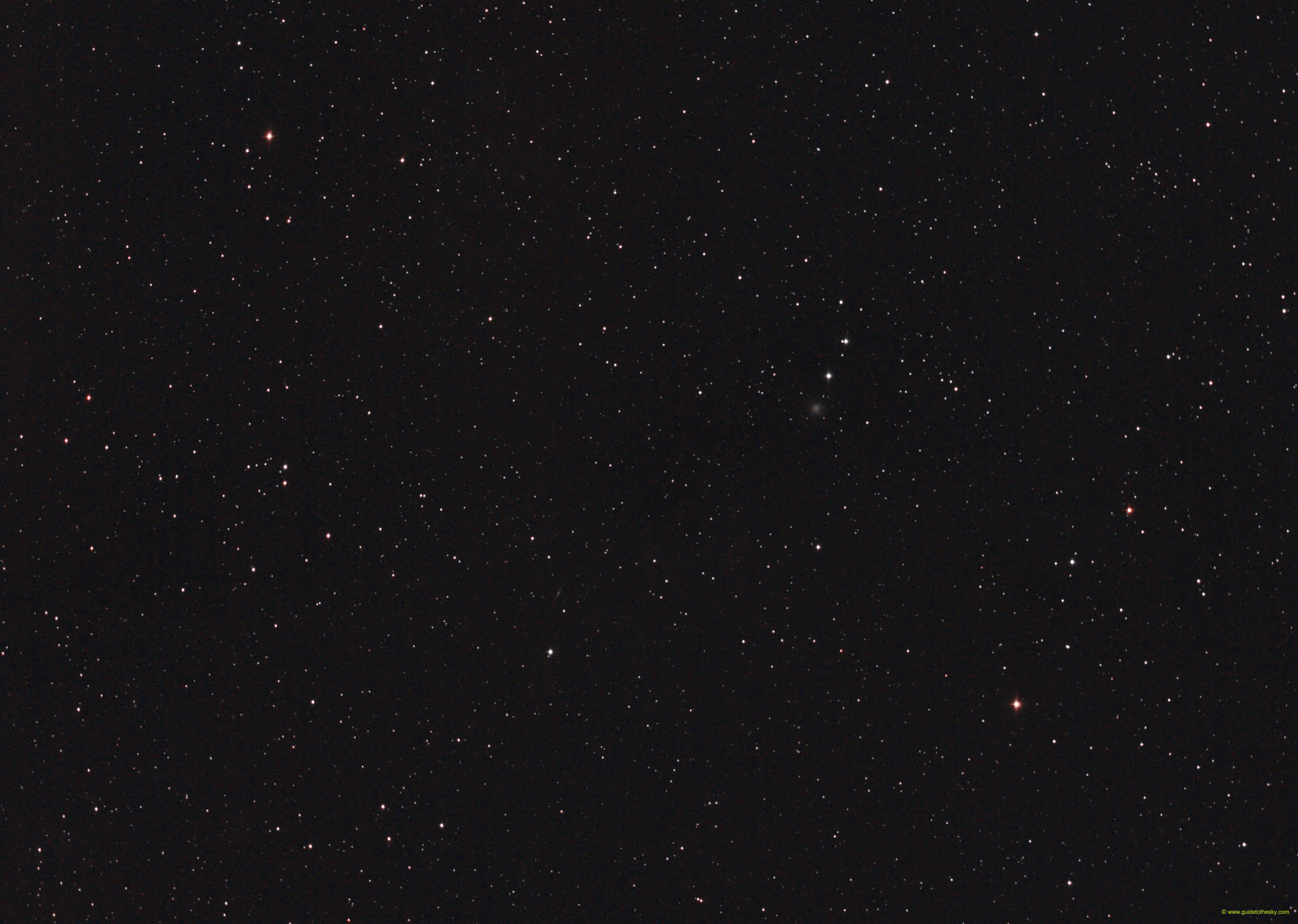NGC 2419 - Lynx

En el límite de las constelaciones del Lince y Géminis, (pertence al Lince), podemos encontrar al lejanísimo cúmulo globular NGC 2419.
Visualmente, NGC 2419 es un objeto pequeño, unos 4' de tamaño aparente, brilla con {{ object[0].NGC2419.visualMagnitude }} magnitud desde {{ object[0].NGC2419.mesDistances[0].dist }} {{ object[0].NGC2419.mesDistances[0].unit }} de distancia. Es por lo tanto, un cúmulo globular bastante lejano difuso y, a menos que dispongamos de un poderoso instrumento, no podremos resolverlo en estrellas,
Obsérverse que debido a su posición y desde nuestra perspectiva, NGC 2419 está casi justo en dirección contraria al centro de la Vía Láctea por ello, NGC 2419 dista más del doble del diámetro de nuestra Galaxia del centro de esta misma. Esto hace que todavía sea objeto de discusión si NGC 2419 pertenece dinámicamente a la Vía Láctea o no.
NGC 2419 se encuentra más lejos del centro de la Vía Láctea que las propias nubes de Magallanes, si lo comparamos con NGC 6229 en Hércules, son similares en cuanto a brillo aparente, sin embargo, NGC 2419 está 3 veces más distante, por lo que se trata de un objeto de un gran brilo intrínseco, probablemente, uno de los más brillantes de la Galaxia.
NGC2419 - El vagabundo intergalactico - en la IA
NGC 2419 is a fascinating object in the constellation Lynx. Here's a breakdown of what it is and why it's interesting:
-
Globular Cluster: NGC 2419 is a globular cluster, a densely packed, roughly spherical collection of stars. These clusters are among the oldest objects in the Milky Way and are often found in the galactic halo.
-
Distance: It's located at a very great distance from the Sun - around 300,000 light-years away. That's farther than the Large and Small Magellanic Clouds! This extreme distance earned it the nickname "Intergalactic Wanderer," as it was once thought it might not even be gravitationally bound to the Milky Way. However, it is now known to be an outer halo member.
-
Brightness and Size: It is fairly bright for a globular cluster, though its great distance makes it appear relatively small in the sky.
-
Composition: NGC 2419 is composed of hundreds of thousands of stars, most of which are very old, low-mass stars.
-
Orbit: It has a highly eccentric orbit around the Milky Way, taking billions of years to complete one orbit. Its orbit brings it closer to the galactic center at its perihelion and swings it far out into the halo at its aphelion.
Key Features and Significance:
-
Testing Stellar Evolution Models: Globular clusters are excellent laboratories for studying stellar evolution. Because the stars in a cluster formed at roughly the same time, differences in their properties (e.g., color and brightness) can be attributed primarily to differences in their mass, allowing astronomers to test their models of how stars evolve over time.
-
Galactic Halo Studies: NGC 2419's location in the outer halo makes it a valuable tool for studying the structure and composition of the Milky Way's halo. It helps astronomers understand the formation and evolution of our galaxy.
-
Chemical Composition: By analyzing the light from the stars in NGC 2419, astronomers can determine their chemical composition. This can provide clues about the origin of the cluster and the conditions that existed in the early universe.
In summary, NGC 2419 is a distant, but important globular cluster that provides insights into stellar evolution, the structure of the Milky Way's halo, and the history of our galaxy.
Más información sobre NGC 2419 en NASA/IPAC.
Mapa alrededor de NGC 2419
Otros identificadores de NGC2419:
"C 0734+390" ,"GCl 12" ,"NGC 2419" ,"[HMT98] AS 17-0" ,"[KPS2012] MWSC 1290",

